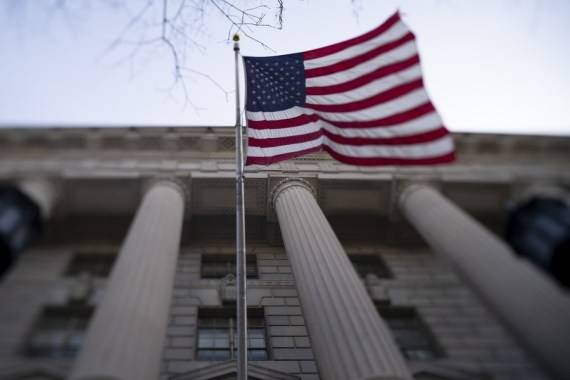The federal government realised a surplus of $308 billion in April 2022, CBO estimates, noting that the federal government recorded a surplus in April of each year….reports Asian Lite News
The federal budget deficit totalled $360 billion in the first seven months of fiscal year 2022 (from October 2021 through April 2022), according to Congressional Budget Office (CBO) estimates.
That amount is about one-fifth of the $1.9 trillion shortfall recorded during the same period in fiscal year 2021, the CBO said in its monthly budget review released on Monday.
Revenues were $843 billion, or 39 per cent higher and outlays were $729 billion, or 18 per cent lower than a year ago, the report showed.
The federal government realised a surplus of $308 billion in April 2022, CBO estimates, noting that the federal government recorded a surplus in April of each year.
The deficit at this point last year and in 2020, $1.9 trillion and $1.5 trillion, respectively, was much larger because of spending in response to the Covid-19 pandemic — mostly for the recovery rebates (also known as economic impact payments), unemployment compensation, and pandemic relief, the report said.
Fed warns sharp rise in interest rates
A sharp increase in interest rates to tame fresh inflation shocks would pose a risk to the American economy, the Federal Reserve said on Monday as it reported a “higher than normal” chance that trading conditions in US financial markets will suddenly deteriorate.
“Further adverse surprises in inflation and interest rates, particularly if accompanied by a decline in economic activity, could negatively affect the financial system,” policymakers wrote in the Fed’s financial stability report, which is published twice a year in May and November.
Consumer finances might be hit by job losses, higher interest rates and lower house prices, the Fed cautioned, with businesses also facing “higher delinquencies, bankruptcies and other forms of financial distress”.
“A sharp rise in interest rates could lead to higher volatility, stresses to market liquidity and a large correction in prices of risky assets, potentially causing losses at a range of financial intermediaries,” the Fed reported.
That would reduce “their ability to raise capital and retain the confidence of their counterparties”, the central bank added.
The US also issued a warning about liquidity — the ability to buy or sell an asset without influencing the price — following several frenzied months in US markets. A sell-off has wiped trillions of dollars off the value of stocks and bonds while closing the door on new share listings and raising borrowing costs for consumers and corporations.
The Fed said the ability to buy or sell assets at prices quoted by broker dealers had “deteriorated” and was worse than should be expected given levels of volatility. It added that the decline in liquidity might be compounded by brokers and high-frequency trading firms “being particularly cautious” given the market conditions.
“Declining depth at times of rising uncertainty and volatility could result in a negative feedback loop, as lower liquidity in turn may cause prices to be more volatile,” policymakers wrote in the report.
Conditions in Treasury, commodity and equity markets have been noticeably poor this year, with traders reporting that they have struggled to conduct even relatively small trades without influencing prices.
The swings in the price of everything from Treasuries to corporate bonds and stocks have also been driven in part by the Fed’s move to tighten monetary policy, as well as Russia’s invasion of Ukraine and the economic slowdown in China.
The central bank last week delivered its first half-point rate rise since 2000 and is set to implement additional increases of the same magnitude at its next two policy meetings. In June, it will also start to shrink its $9tn balance sheet — which ballooned after it hoovered up bonds during the coronavirus pandemic — as it steps up its efforts to rein in the highest inflation in roughly 40 years.

Leave a Reply